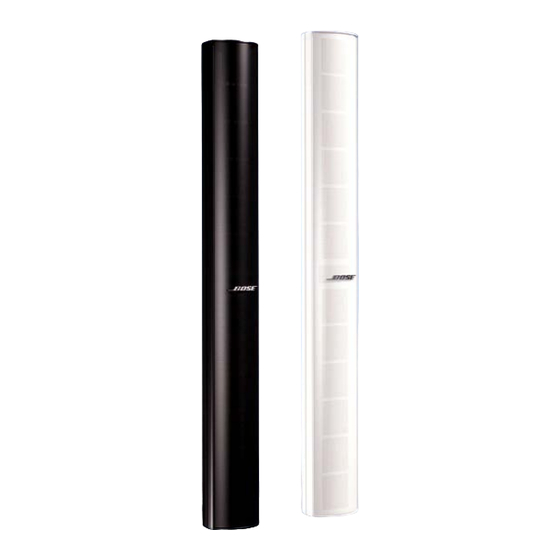Bose Panaray MA12 Teknik Temel ve Tartışma - Sayfa 23
Konuşmacılar Bose Panaray MA12 için çevrimiçi göz atın veya pdf Teknik Temel ve Tartışma indirin. Bose Panaray MA12 36 sayfaları. Modular line array loudspeaker
Ayrıca Bose Panaray MA12 için: Kullanıcı Kılavuzu (2 sayfalar), Kurulum Kılavuzu (16 sayfalar), Kurulum Kılavuzu (8 sayfalar), Kurulum Kılavuzu (7 sayfalar), Servis Kılavuzu (11 sayfalar)

OTHER LINE-SHAPED SOURCES
I
the last section, the unique decisions and choices Bose made in designing the innovative
N
MA12™ modular array were discussed. However, there are other line-shaped sources already
available. How do they compare to the MA12 ?
Column speakers
S
line-shaped sources have been around for a long time. A number of well-known
OME
manufacturers have developed versions, called column speakers, as early as the 1940's. The
speakers had limited frequency response and output. In other applications where better tonal
balance and higher levels were needed they simply could not be met by these column
speakers. None could be considered high performance speakers by today's standards.
Sources using electrostatic, ribbon, or planar magnetic transducers
A
class of line-shaped speakers uses electrostatic, ribbon or planar magnetic
NOTHER
transducers. In general, these transducers do not produce a full-range frequency response, but
only covers from about 3-500Hz and up. To cover the range of lower frequencies up to about
300-500Hz, the transducers are augmented by traditional sources typically using woofers in a
sealed enclosure at the bottom of each speaker.
In some implementations, the ribbon emits sound both to the front and the back, so high-
energy sound from the rear of the speaker is directed away from the audience and onto wall
surfaces where reflections add to reverberation and degrade clarity and intelligibility. Many
of these speakers, while looking promising on paper, are not designed for professional
applications, require a base to extend the frequency response, and radiate equal amounts of
sound to the rear.
DSP-based arrays
THERE
another class of arrays that are using digital signal processing (
IS
steer the speakers' radiation patterns. Most of these arrays use 4" (10.2 cm) or larger
transducers. The drivers are either spaced closely in a line, or in a scheme where spacing
varies. The speakers have built in multi-channel signal processing and amplification.
There are some obvious differences between these arrays and the MA12 . First, these
speakers are using larger drivers resulting in an appearance that is significantly wider than the
MA12 . The larger drivers also have narrower horizontal coverage, which can be a
disadvantage with audiences located close to the speaker.
The biggest difference is these speakers' use of
array, and which also makes the cost much higher than the MA12 . Drivers get different
signals and hence require their own signal processing and amplification. This makes it
possible to steer the radiation pattern at middle and higher frequencies. For example, the
®
Bose
MA12™ Modular Array: Technical Foundation & Discussion
April 2002, © Bose Corporation, All Rights Reserved
to control the radiation pattern of the
DSP
Page 23 of 36
) to control and
DSP
